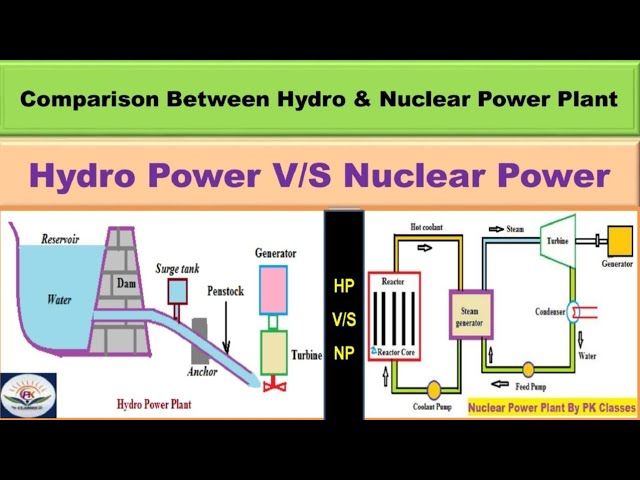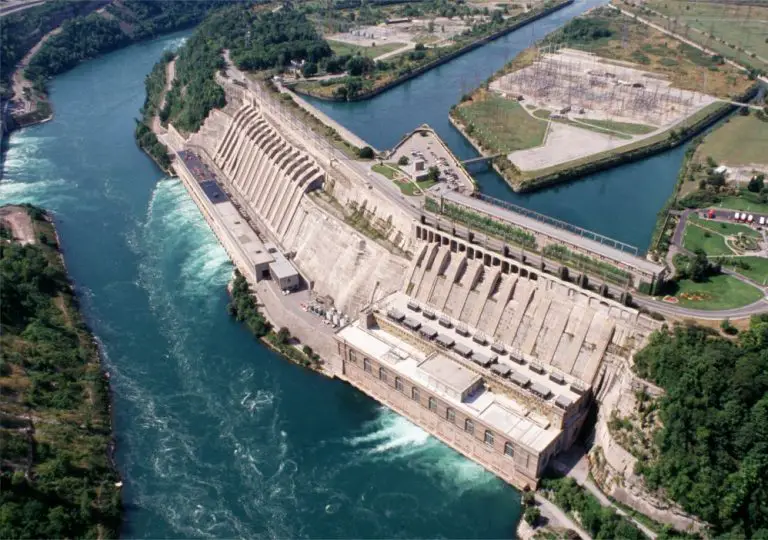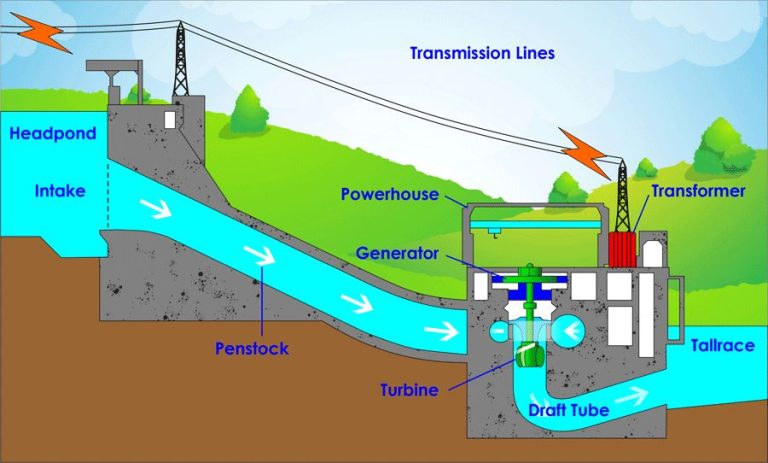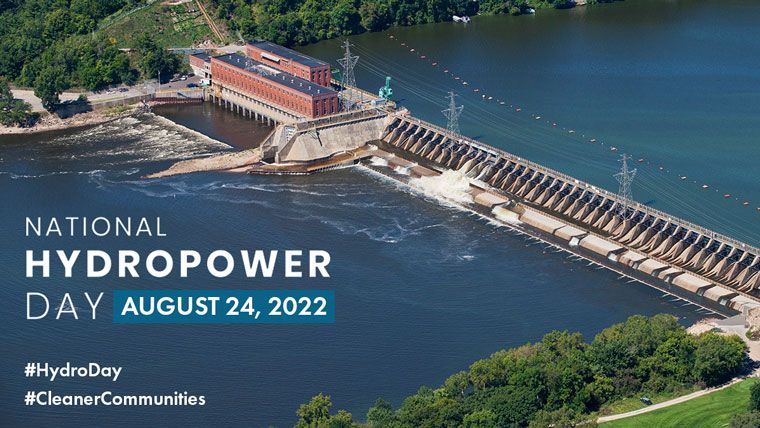Can You Generate Hydropower In A River Without A Dam?
Hydropower is one of the oldest and most widely used renewable energy sources in the world. It involves utilizing the kinetic energy from flowing water to generate electricity. With increasing global energy demands and the need to transition to cleaner energy sources, hydropower continues to play an important role as a renewable energy source that does not contribute to air pollution or carbon emissions.
The generation of hydropower today represents approximately 16% of the global electricity supply. It is flexible and reliable, backed by decades of proven technology. Many countries are looking to significantly increase their use of hydropower in the coming years to help combat climate change, although finding a balance between environmental factors, sustainability and energy needs is an ongoing issue.
Traditionally, hydropower generation requires major infrastructure – specifically dams. But new innovations are now unlocking hydropower possibilities even without dams. These small-scale, low-impact approaches provide renewable energy while minimizing the environmental effects often caused by major dam and reservoir projects. Exploring these options represents an important step in sustainably expanding hydropower capacity.
Hydropower Basics
Conventional hydropower plants use dams to store river water in a reservoir. The water in the reservoir has potential energy because of its height above the river below the dam. The stored water can be released through a turbine to generate electricity. The flowing water turns the turbine blades, which spin a generator to produce electricity. The amount of electricity that can be generated depends on the volume of water flow and the height of the water drop, known as “head.” Larger reservoirs allow more water storage and flow control, generally leading to greater electricity output. Multipurpose dams may also provide flood control, irrigation, navigation, and recreation benefits. However, dams and reservoirs substantially alter rivers and have major environmental impacts.
Environmental Impacts of Dams
Dams can have major ecological impacts on rivers and wildlife. By blocking rivers, dams disrupt the natural flow regime and prevent organisms from migrating along waterways. This fragments populations of fish, amphibians, and other aquatic life. Dams also change water temperatures and nutrient levels, altering the types of species able to live downstream.
Additionally, the reservoirs created by dams flood large areas of land, destroying forests, wetlands, and other important habitats in the process. This impacts terrestrial species like birds, mammals, reptiles, and insects that depend on those ecosystems. Flooded vegetation also releases methane, a potent greenhouse gas.
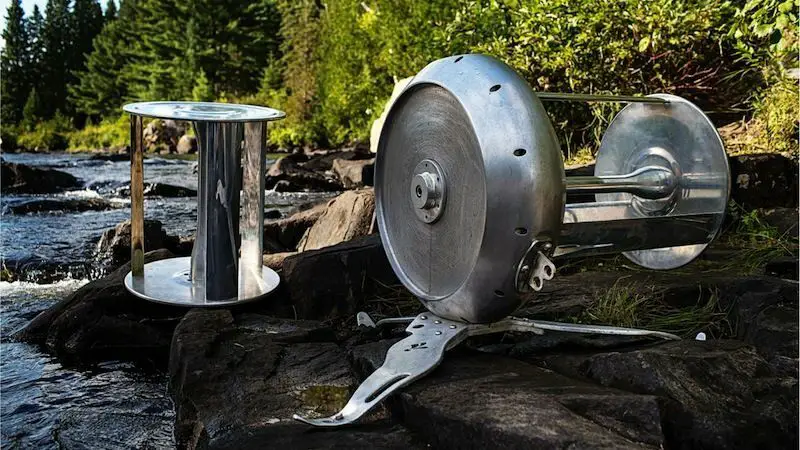
Sediment builds up behind dams rather than flowing downstream, which starves areas of needed nutrients and minerals. This erosion can damage river channels and make the water more turbid. Overall, dams drastically disrupt the natural hydrology that many plants and animals rely on to survive. Their environmental effects can be felt for many miles upstream and downstream.
Dam-Free Hydropower Technologies
There are emerging hydropower technologies that can generate electricity from rivers and water pipelines without requiring a large dam. Two main types of dam-free hydropower options are instream and conduit hydropower.
Instream hydropower utilizes generators placed directly in a river to extract energy from the natural flow of water. The generators consist of a turbine connected to a spinning rotor that activates an electrical generator. Some instream turbines are fully submersible units that sit on the riverbed, while others float on the surface attached to a platform. Instream turbines allow electricity production without diverting the river or impeding fish migration.
Conduit hydropower systems generate electricity by tapping into man-made pipelines and canals. A small turbine is installed directly within the pipe itself to spin as water flows through. Conduit facilities provide clean power without any impacts on the surrounding environment. Water pipelines in municipal drinking water systems, agricultural irrigation canals, and industrial facilities offer potential sites for conduit hydropower. The generation capacity is relatively small but adds up across numerous conduits.
Instream Hydropower
Instream hydropower technologies allow for electricity generation within the flow of a river, without needing to divert water through a canal or pipe. Turbines are placed directly in the waterway and spin as the natural flow of the river moves through them. Some common types of instream turbines used for hydropower include:
- Hydrokinetic turbines – These sit on the riverbed and rely on the kinetic energy of the flowing water to spin the turbine blades.
- Archimedes screws – Resemble a corkscrew design and are rotated by the river current to turn an internal generator.
- Vortex inducers – Use vortices created by the river’s flow to induce spinning motion that powers a generator.
Advantages of instream turbines are their simple design and ability to generate electricity from slow-moving rivers, without needing a height differential. They also allow for fish and debris to safely pass through the system.
Instream turbines have been installed successfully at many locations worldwide, including the Mississippi River in the USA, the Thames River in the UK, and the Yukon River in Canada. Their modular and scalable nature makes them ideal for small, remote communities and developing regions to utilize hydropower without a large dam infrastructure.
Conduit Hydropower
Conduit hydropower, also known as pipeline hydropower, utilizes existing water infrastructure to generate electricity. Water flowing through tunnels, pipelines, aqueducts or canals is diverted through a turbine connected to a generator to produce power. Since it taps into existing flows and infrastructure, conduit hydropower does not require building new dams or diversions.
One example is a hydropower system installed in a drinking water pipeline in Portland, Oregon. The pipeline drops over 200 feet as it carries water from a reservoir to the city. A hydropower turbine was added along this descent to generate electricity from the water flowing downhill through the pipe. The power generated is fed into Portland’s electrical grid.
Irrigation canals and aqueducts also present opportunities for conduit hydropower. In Arizona, a hydropower turbine was installed in the Central Arizona Project canal that delivers Colorado River water to Phoenix and Tucson. The canal drops over 240 feet, allowing the in-conduit turbine to generate electricity for local use.
Conduit hydropower provides a low impact way to tap into existing flows and infrastructure to produce clean, renewable electricity. With thousands of miles of water pipelines and canals across the country, conduit hydropower has significant potential for growth.
Benefits of Dam-Free Hydropower
Dam-free hydropower technologies provide several key advantages compared to conventional hydropower dams:
Lower Costs
Constructing a full-scale hydroelectric dam requires huge upfront investments, frequently costing billions of dollars. Dam-free technologies have much lower capital costs, making smaller-scale hydropower projects economically viable.
Minimal Environmental Impact
Dams drastically alter rivers and surrounding ecosystems. Dam-free technologies allow generating electricity from flowing water without disrupting fish migration or habitats. This makes them an eco-friendly alternative.
Shorter Development Timeline
It can take over a decade to complete all the planning, approvals, and construction for a major dam. Dam-free projects can often be installed within 1-2 years, allowing faster energy production.
Scalability and Modularity
Modules can be combined to match a site’s hydro resource potential. This scalability allows generating anything from a few kilowatts to multiple megawatts of power. Systems can also be relocated if needed.
Minimal O&M
Without a large concrete structure to maintain, operations and maintenance costs are much lower compared to conventional hydropower dams and facilities.
Challenges and Limitations
While dam-free hydropower shows promise, the technologies come with some key challenges and limitations:
Variability in power generation: The amount of power generated by instream and conduit projects can fluctuate greatly depending on seasonal rainfall and river flows. This makes it difficult to provide consistent baseload power compared to conventional hydropower from dams.
Permitting difficulties: Instream and conduit projects may still face regulatory hurdles related to environmental impacts. Projects must be carefully sited and designed to minimize disruption to river ecosystems, fish migration patterns and more. Permitting new projects can be time consuming and costly.
High costs: The turbines and other infrastructure for dam-free hydropower can be expensive to install per unit of power capacity compared to conventional hydropower. This can make the projects less economically viable.
Immature technologies: Instream and conduit hydropower are still emerging technologies with limited real-world examples to date. More research and development is likely needed to improve performance and lower costs.
Low power output: Individual dam-free projects generate relatively small amounts of electricity compared to large dam reservoirs. Many projects would be needed to produce equivalent power generation.
While dam-free hydropower shows promise as a renewable energy source, overcoming these challenges will be key for broader adoption and competitiveness with conventional hydropower.
Future Outlook
The future looks bright for dam-free hydropower technologies. As governments and the public become more aware of the environmental impacts of dams, there will likely be increased demand for green, sustainable hydropower options. Several forecasts predict strong growth for instream and conduit hydropower in the coming decades.
One report estimates the global instream hydrokinetic power market will expand at a compound annual growth rate of over 20% between 2022-2030. This rapid growth will be driven by rising energy demands, supportive government policies, and innovations in turbine efficiency and cost-effectiveness. Many countries are investing in streamlining regulatory frameworks to enable faster adoption of instream hydrokinetic projects.
Conduit hydropower is also expected to see widespread growth, especially in developing regions where irrigation networks are still being built out. Retrofitting existing water pipelines and canals with hydro turbines presents a huge untapped opportunity. With conduit hydropower costs falling, more municipalities and water utilities will add conduit systems to offset operational costs and generate green power.
Overall, the minimal environmental impact, flexibility, and decreasing costs of dam-free hydropower technologies make them well-positioned to play a major role in the global renewable energy transition. With the right policies and investments, they could expand rapidly and provide carbon-free electricity to communities worldwide.
Conclusion
In summary, dam-free hydropower technologies like instream and conduit hydropower offer a promising renewable energy solution while avoiding many of the environmental consequences of traditional dammed hydropower. Technologies like horizontal axis turbines placed in rivers and tidal streams or small turbines inserted into existing pipes and aqueducts can generate clean electricity with minimal ecosystem disruption. While dam-free technologies produce less power than massive dams and are best suited to smaller scale, localized energy production, they offer an environmentally sustainable alternative. With continued innovation and adoption, dam-free instream and conduit hydropower have the potential to grow as a commercially viable source of renewable energy worldwide.

